Zinnia is more than four years old, and I began her therapy dog training when she was eight or nine months old; I decided to train her at Bishop Maginn with the refugee children she would be working taking part in the training. It was more successful than I imagined. She and the children grew up together. The trust between them is amazing.
Therapy dogs can only be trained so far; their best and most important work comes from their hearts, intelligence, and intuition. And their disposition.
Our work has evolved from the young refugees to older students, from Bishop Maginn to Bishop Gibbons (two very different kinds of schools, from the pre-pandemic Mansion to the post-pandemic Mansion, and from there to adding Memory Care to her training and experience. I told the breeder I needed a calm and trusting dog, she delivered.
Zinnia is wonderful at learning in part because she is very well-bred. After that, she is calm, which means she can listen, which means she can learn.
She is naturally affectionate. She is as intelligent as any therapy dog I’ve had the pleasure of working with – (she is the sixth) and because we have worked together so often and so closely and comfortably, she seems to know what is needed and want before I get to tell her.
The Memory Care unit of the Mansion has been the most formidable challenge for both of us. Working with the memory impaired is the most demanding work I’ve yet done in my do-gooding work.
Here, the people are often shy, fearful, confused, and disoriented. They have left behind the memories of their loves and loves and are often cautious and withdrawn. Their confusion and sadness is sometimes palpable. They can also laugh and smile.
Zinnia had to be wholly re-trained. They frighten easily and withdraw instinctively.
Here, she had to learn to jump up on sofas, something she was always trained never to do. This is so the residents can come to her in their own time. Quite often, our work in memory care involves getting onto a soft and staying there for as long as it takes for the residents, one by one, to come to her, touch her, and sit with her if they like. Ellen, above, adores Zinnia and encourages the residents to reach and touch her.
In this work, we often have to wait and be still.
They move slowly and gently, very different from the often raucous and loud high school students and refugee kids.
Today, she showed her stuff and came of age. She sat on the sofa for nearly an hour, and when some of the residents held back, I released her, and she went to every one of them, winning them over with a lick, a wag, or just leaning against a foot. As these photos show, she has really come of age, and I am very proud to work with her.
Jane and Amanda, a Mansion aide. The residents come to know and love their aides and, slowly but surely, trust and depend on them. The aides are an anchor in a rolling sea; they mean a lot to the people they work with. They are their channels to the outside world, their guides to making sense of a life upended. Jane is a gifted artist who begins every day by painting an original work.
I love to take her portrait, and I always try to show the connection between the residents and the aides.
We sit on the sofa, and one by one, the residents come to see her. In 15 or 20 minutes, all the chairs are filled with people waiting their turn or wanting to get close. Even the most reticent of them smile and laugh when they see Zinnia. She is a smile machine, she lights up a room.
Sometimes, it only takes a gentle touch or lick to get a smile. The shy people stay back and then, slowly and carefully, lean over to touch her. When they see she doesn’t mind or licks their hand, they smile and return for more. They relax, smile, and brighten at touching her and feeling her fur. She brings memories and feelings back.
At the end of our hour, there is always a crowd around Zinnia. Every week, I’m asked if she can sleep over. I respond that it’s not legal to do that.
Lori is one of the shyest residents in Memory Care. Nobody saw her smile until Zinnia leaned over and kissed her cheek. This work is such a joy.
When it gets peaceful, I call it a day. Work for therapy dogs looks easy, but it isn’t. After 45 minutes to an hour, I see Zinnia is exhausted, and we head home. She sleeps for hours. When I say, “Let’s go to work,” she races to the door and then to the car. She loves going there. Working animals love to work, something the dunderheads in Animal Rights headquarters never seem to learn.
Zinnia has come of age. She is a good dog.

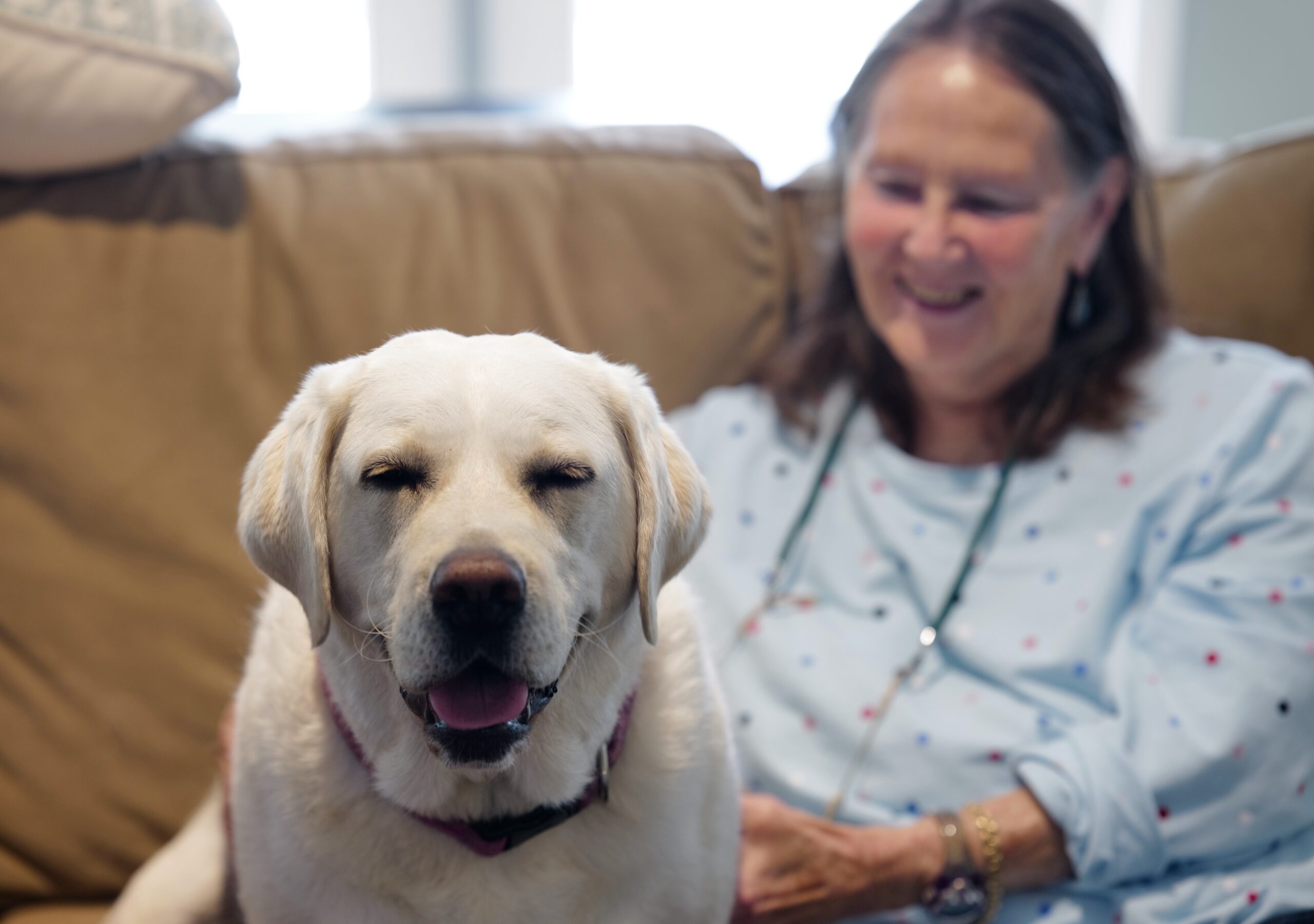
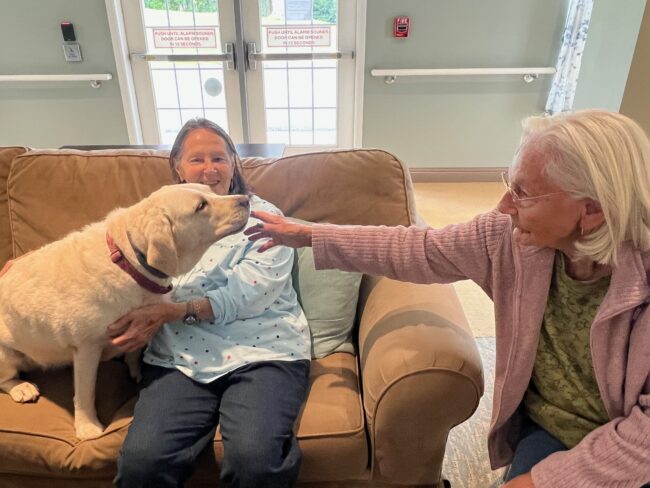

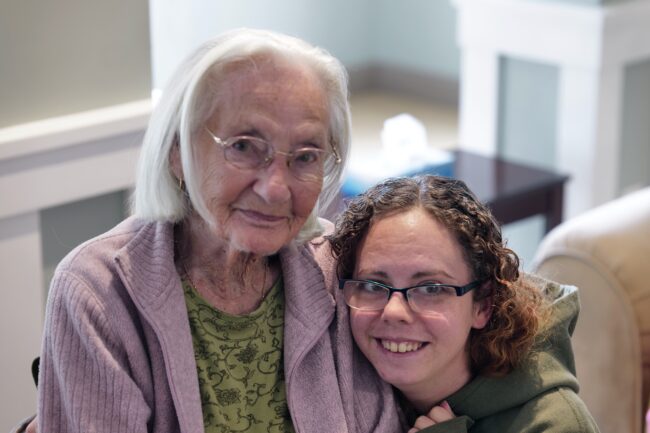
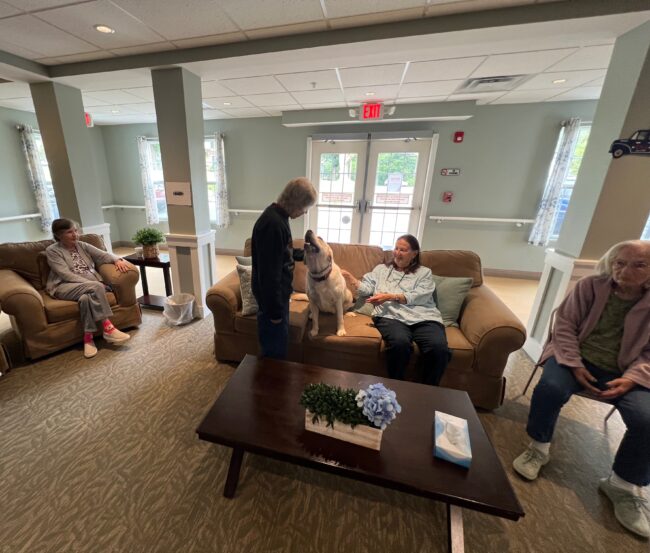
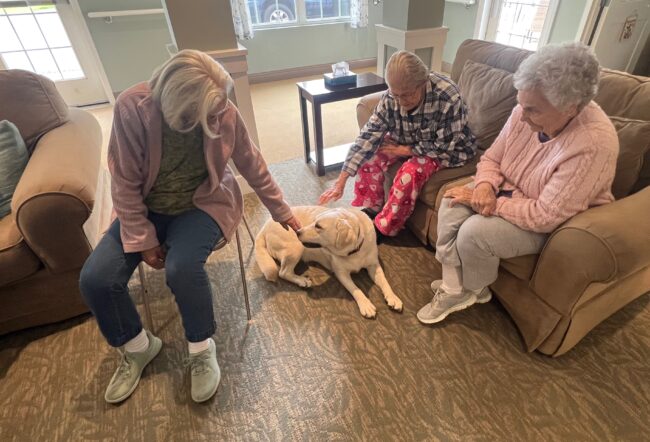
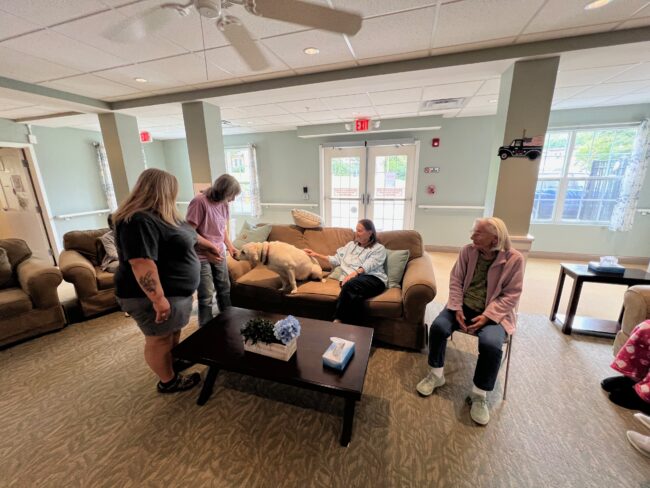
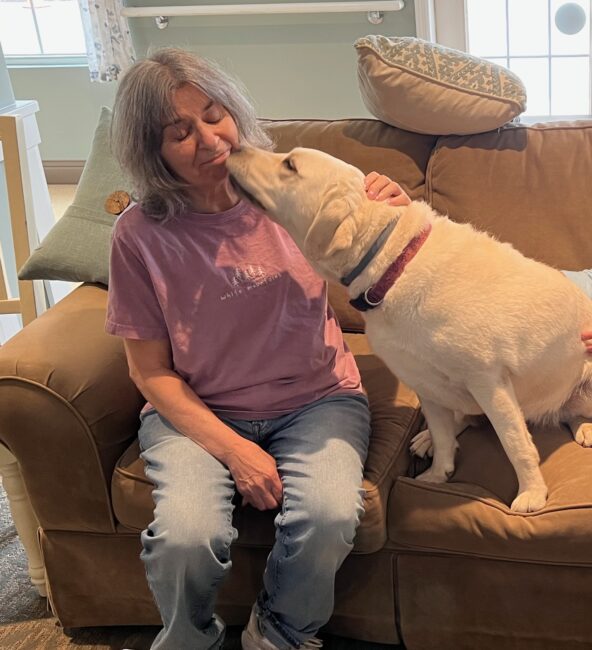
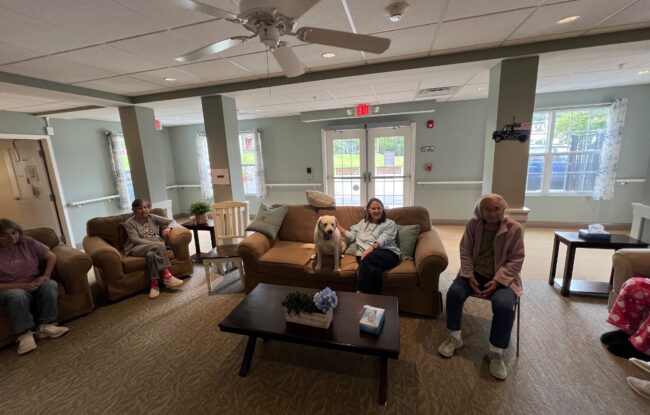
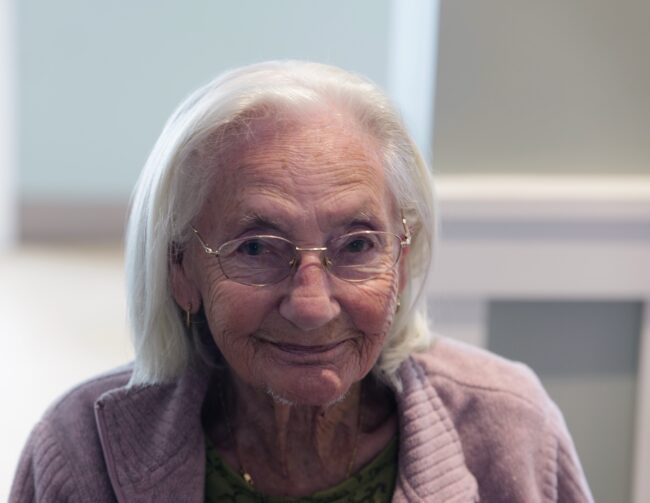
I love your telling of Zinnia’s therapy work…….she does seem to be the absolute perfect dog……… for this challenge. And you were fortunate to recognize her abilities early on. The good work you have done and the joy you both have brought to all of the Mansions residents……is a thing of great beauty and importance. I love to see it! You have been blessed with several wonderful therapy dogs……… it’s been a joy to follow all of you
Susan M
And a joy to have you as a reader Susan..
Zinnia is the best!
I loved reading this. What a wonderful way to spread joy. Kudos to you and Zinnia for the wonderful work that you do.
Always was a joy to see a therapy dog walking down the hospital hallway! It was just a moment of peace and calmness to stop and love on a beautiful dog. The staff needs it as much as the patients!
A beautiful story. Memory care is the hardest work of all. Having done that work for many years, I salute you and Zinnia for bringing these moments of calm and affection to these suffering people. Studies show that the good effects of such interactions last for many hours.